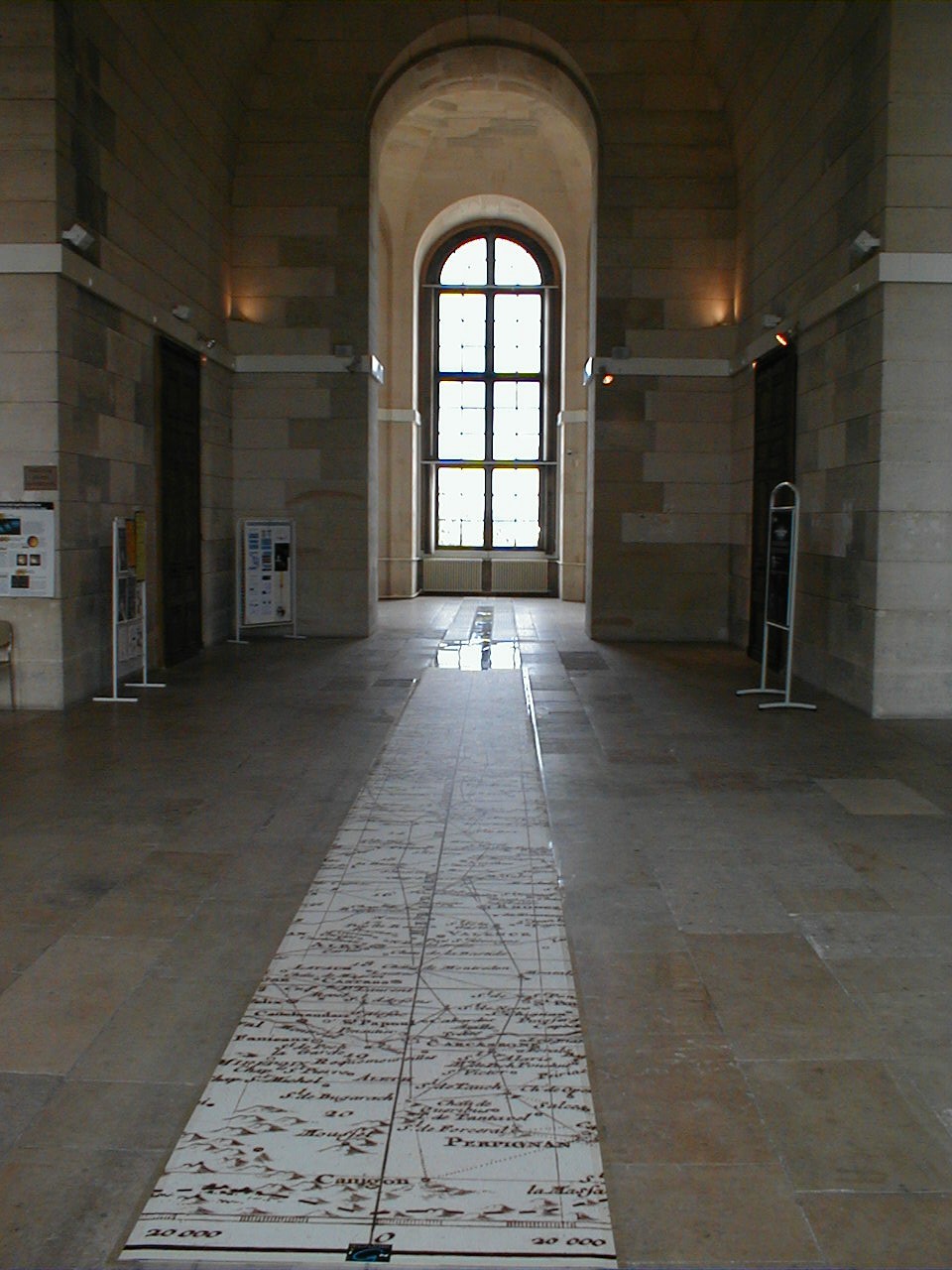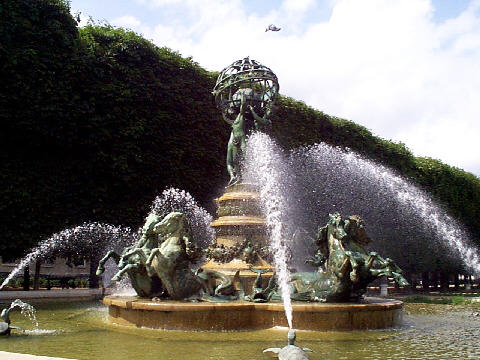 |
An XXL extragalactic survey: prospects for the XMM next decade Workshop, 14-16 April 2008, Paris |
|---|
Welcome | Context | Programme | Science | Contribution | Participants | ( SOCadm )
 |
An XXL extragalactic survey: prospects for the XMM next decade Workshop, 14-16 April 2008, Paris |
|---|
- In Saint-Sulpice:
- Tour of the famous organ (in the process of being registered as a UNESCO world heritage monument)
- Concert by Sophie Cauchefer-Choplin, the Deputy Titulaire of the organ
- A glimpse at the gnomon
- Walk along the Paris Meridian to the Observatoire de Paris through the gardens of the Palais du Luxembourg (~ 2 km)
or
Bus tranportation to the observatoire with the conference bus
- In the Observatoire de Paris:
- A glimpse at the historical rooms and dome
- Dinner in the Cassini Room
Financial contribution : 20 euros/person (participant or accompanying people)
The present church is the second building, erected over an ancient Romanesque church originally constructed during the 13th century. Additions were made over the centuries, up to 1631. The new building was founded in 1646 by parish priest Jean-Jacques Olier (1608-1657] who had established the Society of Saint-Sulpice, a clerical congregation, and a seminary attached to the church.
Work continued for about 140 years: The church was mostly completed in 1732, but the facade at the west end was not begun before 1776.
The result is a simple two-storey west front with three tiers of elegant columns. The overall harmony of the building is, some say, only marred by the mismatched two towers; one, to the design of Jean François Chalgrin, was added shortly before the French Revolution but the second was never begun.
The chancel is the work of Christophe Gamard, Louis Le Vau and Daniel Gittard, but the work was completed by Gilles-Marie Oppenord, a student of François Mansart, 1714-1745. The façade, originally by Giovanni Niccolo Servandoni has been modified by Jean Chalgrin and others. Large arched windows fill the vast interior with natural light. At either side of the front door are two enormous shells given to François I by the Venetian Republic. The two shells rest on rock-like bases, sculpted by Jean-Baptiste Pigalle.
The church has a long-standing tradition of talented organists that dates back to the eighteenth century (see below). In 1862, the current pipe organ, constructed by Aristide Cavaillé-Coll, was added to the church. It is Cavaillé-Coll's magnum opus, featuring 101 speaking stops, and is perhaps the most impressive instrument of the romantic French symphonic-organ era.
Nineteenth-century redecorations to the interior, after some Revolutionary damage, when Saint-Sulpice became a Temple of Victory, include the murals of Eugène Delacroix, that adorn the walls of the side chapel. The most famous of these are Jacob Wrestling with the Angel and Heliodorus Driven from the Temple. Jules Massenet set an act of Manon at fashionable Saint-Sulpice.
Marquis de Sade and Charles Baudelaire were baptized in Saint-Sulpice (1740 and 1821, respectively), and the church also saw the marriage of Victor Hugo to Adèle Foucher (1794).
(Source: Wikipedia)
The pipe organ
The church boasts one of the world's finest and most famous organs, a pipe organ constructed by Aristide Cavaille-Coll in 1862, using many materials from the church's earlier French Classical organ built by Clicquot in 1781. The Grand-Orgue of Saint-Sulpice was at the time of its building one of only three "100 stop" organs in all of Europe. Its organists have also been renowned, starting with Nicolas Sejan in the 18th century, and continuing with Charles-Marie Widor (organist 1870-1933) and Marcel Dupre (organist 1934-1971), both great organists and composers of organ music. Thus for over a century (1870-1971), Saint-Sulpice employed only two organists, and much credit is due to these two individuals for preserving the instrument and protecting it from the ravages of changes in taste and fashion which resulted in the destruction of many of Cavaille-Coll's other masterpieces. The current organists are titulaire Daniel Roth (since 1985) and Sophie-Veronique Cauchefer-Choplin.
This impressive instrument is perhaps the summit of Cavaille-Coll's craftmanship and genius. The sound and musical effects achieved in this instrument are almost unparalleled. Widor's compositional efforts for the organ were intended to produce orchestral and symphonic timbres, reaching the limits of the instrument's range. With five manuals keyboards and boasting two 32-foot stops, the organ composer at St. Sulpice has an incredibly rich palette of sounds at his disposal.
Aside from a re-arrangement of the manual keyboards c. 1900, the installation of an electric blower and the addition of two Pedal stops upon Widor's retirement in 1934, the organ is maintained today almost exactly as Cavaille-Coll left it.
(Source: Wikipedia)
The gnomon
In 1727 Languet de Gercy, then priest of Saint-Sulpice, requested the construction of a gnomon in the church as part of its new construction, to help him determine the time of the equinoxes and hence of Easter (since Easter Sunday is to be celebrated on the first Sunday following the full moon after the spring equinox). A meridian line of brass was made, running across the floor and then ascending a white marble obelisk, nearly eleven meters high, at the top of which is a sphere surmounted by a cross. The obelisk is dated 1743.
In the south transept window a small opening with a lens was set up, so that a ray of sunlight shines onto the brass line. At noon on the winter solstice (December 21), the ray of light touches the brass line on the obelisk. At noon on the equinoxes (March 21 and September 21), the ray touches an oval plate of copper in the floor near the altar.
Constructed by the English clock-maker and astronomer Henry Sully, the gnomon was also used for various scientific measurements: This rational use may have protected Saint-Sulpice from being destroyed during the French Revolution.
(Source: Wikipedia)

Its foundation lies in the ambitions of Jean-Baptiste Colbert to extend France's maritime power and international trade in the 17th Century. Louis XIV promoted its construction starting in 1667, its being completed in 1671. The architect was probably Claude Perrault whose brother, Charles, was secretary to Colbert and superintendent of public works. Optical instruments were supplied by Giuseppe Campani. The buildings were extended in 1730, 1810, 1834, 1850, and 1951. The last extension incorporates the spectacular Meridian Room designed by Jean Prouve.
The world's first national almanac, the Connaissance des temps was published by the observatory in 1679, using eclipses in Jupiter's satellites to aid sea-fairers in establishing longitude. In 1863, the observatory published the first modern weather maps. In 1882, a 33cm astrographic lens was constructed, an instrument that catalysed the ill-fated, international Carte du Ciel project.
In November 1913, the Paris Observatory, using the Eiffel Tower as an antenna, exchanged sustained wireless (radio) signals with the United States Naval Observatory to determine the exact difference of longitude between the two institutions.
(Source: Wikipedia)The Cassini Room and the Meridian

Fontaine de l'Observatoire
